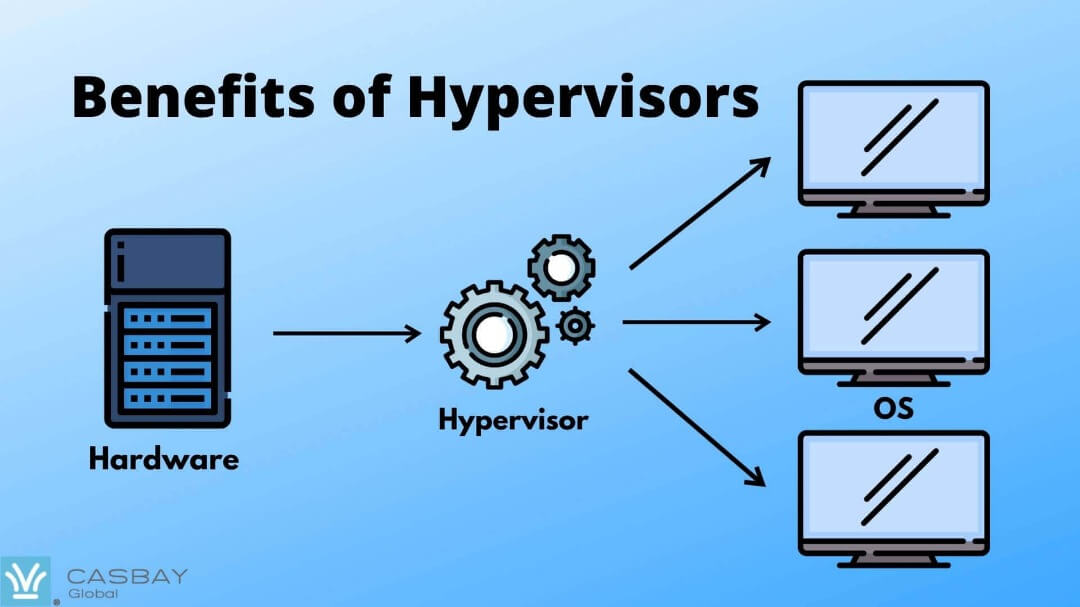Benefits of Hypervisors

Hypervisors offer several benefits, particularly in the context of virtualization, which is the process of creating virtual instances of computing resources such as servers, storage, and networks. Here are some key benefits of hypervisors:
-
Resource Consolidation:
- Hypervisors enable the consolidation of multiple virtual machines (VMs) onto a single physical server. This consolidation leads to better utilization of hardware resources, reducing the need for maintaining numerous physical servers.
-
Cost Savings:
- By consolidating workloads and optimizing resource usage, organizations can achieve significant cost savings. This includes reduced hardware costs, lower energy consumption, and savings on physical space in data centers.
-
Isolation of Environments:
- Hypervisors provide a high degree of isolation between virtual machines. Each VM operates independently of others, ensuring that issues in one VM do not impact others. This isolation is crucial for security, stability, and reliability.
-
Flexibility and Agility:
- Virtualization with hypervisors enhances flexibility and agility in IT environments. Virtual machines can be easily created, modified, and deleted, allowing for quick provisioning and adaptation to changing workloads.
-
Rapid Deployment:
- Hypervisors enable the rapid deployment of virtual machines, reducing the time it takes to set up new servers or services. This is particularly beneficial for testing, development, and scaling resources to meet demand.
-
Improved Resource Management:
- Hypervisors offer advanced resource management capabilities, allowing administrators to allocate CPU, memory, storage, and network resources dynamically based on the changing needs of virtualized workloads.
-
Efficient Disaster Recovery:
- Hypervisors support features such as VM snapshots and live migration, making it easier to implement efficient disaster recovery strategies. In the event of a hardware failure, virtual machines can be quickly moved to another host without downtime.
-
Hardware Independence:
- Virtual machines are abstracted from the underlying hardware, allowing them to run on different physical hosts with varying hardware configurations. This provides hardware independence, making it easier to migrate and manage virtualized workloads.
-
Testing and Development:
- Hypervisors are widely used for testing and development purposes. Developers and testers can create and run multiple virtual environments on a single physical machine, enabling efficient software development and testing.
-
Energy Efficiency:
- By consolidating workloads onto fewer physical servers, hypervisors contribute to energy efficiency in data centers. This is achieved by reducing the overall power consumption and heat generated by hardware.
-
Scalability:
- Hypervisors allow for easy scalability of IT infrastructure. As demand increases, additional virtual machines can be provisioned quickly to scale resources up, and unused VMs can be powered off to scale resources down.
-
Centralized Management:
- Hypervisors often come with centralized management tools that provide a single interface for administrators to monitor, configure, and manage virtualized environments.
Overall, the use of hypervisors and virtualization technologies brings efficiency, flexibility, and cost-effectiveness to IT operations, making them a fundamental component of modern computing environments.
Thank You.
